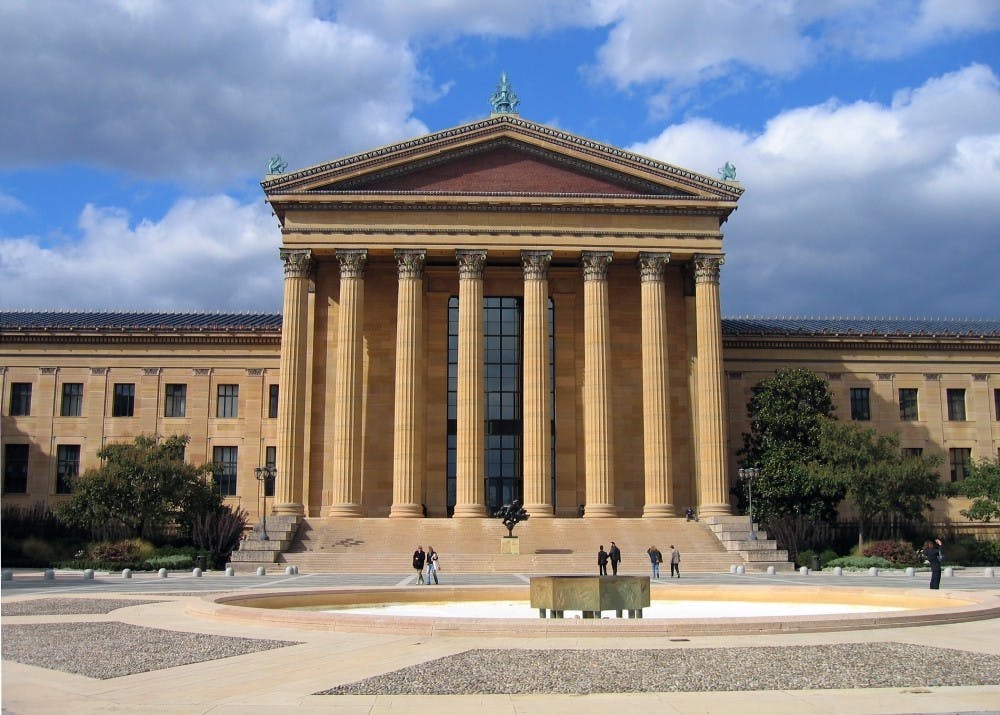It was the fourth day of NSO, and you found yourself dancing in the Great Stair Hall of the Philadelphia Museum of Art, surrounded by the works of figures like Picasso, Rothko and O’Keeffe. After an evening filled with music and dessert, you bussed back to campus and didn't look back. For many students, interaction with the PMA stops there. Others may visit an exhibition every so often. But for students in the History of Art department and those who taking related courses, their connection with the museum runs deeper. Thanks to the strong relationship between Penn and the PMA, students are able to uniquely access art and material culture through a wide range of courses, symposia, internship and fellowship opportunities.
Given the proximity of Penn’s campus to the museum, it's common for students to have classes inside the galleries. Not only do Teaching Assistants often hold recitations at the museum, but some professors also base their seminars on the museum’s collections. Students can then contribute their research to a future exhibition.
Kendra Grimmett, a PhD candidate in History of Art, was part of Professor Larry Silver’s curatorial seminar “Netherlandish Art—Northern Pictures in the Johnson Collection” last spring. Students researched works of art that will appear in a centennial exhibition of the PMA's Johnson Collection. They also learned about online catalogue strategies, exhibition planning and object display considerations—alongside with the collection's curator, Christopher Atkins.
“One of the benefits of taking a curatorial seminar in partnership with the PMA is gaining privileged, behind–the–scenes access to the museum’s departments and collections,” Grimmett said.
Penn faculty members also collaborate with PMA curators to co–teach courses on current exhibits at the museum; PMA curators even lead their own graduate seminars. History of Art Professor Christine Poggi and Erica Battle, the associate curator of contemporary art at the PMA, collaborated on the course “International Pop Art,” which accompanied the International Pop exhibition last spring. Poggi, who's taught pop art before, wanted to take this new teaching opportunity to learn more from an international perspective. She invited Battle, the receiving curator of the traveling exhibition and a Penn alumna, to co–teach the course. With funding from the Department of History of Art and the PMA, they invited five scholars and curators from other institutions to speak about pop art to the class at Penn and in the museum.
“It was wonderful because the students were able to work on objects that they had seen in the show and go back and see them again," said Poggi. "They read about versions of pop art from countries such as England, Germany, Japan, Italy, Brazil and Argentina, and explored areas that were new to them...I think the papers were stronger because the students had the chance to see so many works of art in person, not just read about them.”
Penn and the PMA also provide internship and fellowship opportunities to undergraduate and graduate students. Both the RealArts@Penn project and the Summer Humanities Internship Program (SHIP) of the Center for Undergraduate Research and Fellowships provide select undergraduate students funds to participate in the PMA’s Museum Studies Internship Program. Penn students can also volunteer with specific museum departments, either in curatorial or administrative roles. However, the connection between Penn undergraduate students and the museum can extend beyond class visits and internship programs. More coordinated initiatives, fellowship programs and job opportunities are geared toward PhD candidates.
Roksana Filipowska, PhD candidate in History of Art, is a spotlight lecturer at the museum. She prepares and leads public gallery conversations on specific pieces of art for the PMA's education department.She also conducts research and writes short essays on the select objects that then become part of the curatorial file. The Spotlight Gallery Conversation program is a partnership among the museum, Penn, Temple University, Bryn Mawr College and the University of Delaware, and it offers graduate students one–year work positions to facilitate the conversations. “It’s a great opportunity to receive training in museum education, work closely with artworks and to meet graduate students from other Art History PhD programs in the area,” Filipowska added.
Another formal collaborative effort is a multi-year Andrew W. Mellon Object-Based learning grant, designed to promote museum and university collaborations. The objective is to strengthen the study of objects and to give graduate students greater access to museum collections. It includes several initiatives: an object-study day at the PMA where curators present an object and discuss it with graduate students; a student–run object–study symposium; and a fellowship position offered to a graduate student to research works of art at the museum.
Karen Redrobe, chair of the Department of History of Art and Professor in Film Studies, said, “I believe that we have a fabulous relationship with the PMA...There are many new and old friendships that sustain our work and make it the pleasure work that it is,” she said. “One of the great things about learning in our department is that when you engage the museum and exhibition world as a student, you see its great variety and complexity.”







